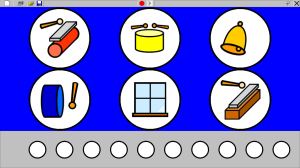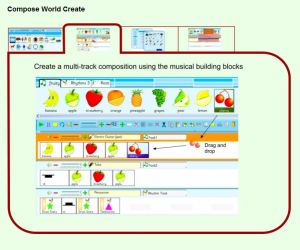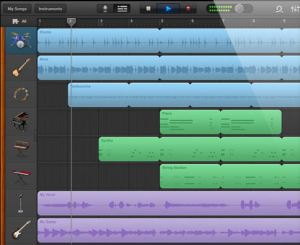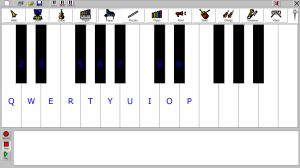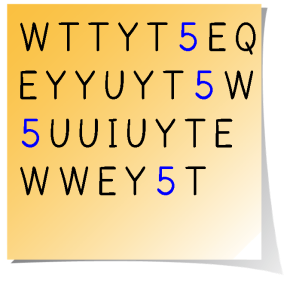More Music Matters
It’s time for part two of my posts about music and technology. Today I’m focussing on stuff that isn’t free but is still great to use in your classroom. Some of these items you might have already but it’s always worth investigating what is available so….here we go. I’m going to start with one that I’ve been using for quite a few years and is always popular with the older pupils, and that’s Dance EJay. One of the reasons I think it’s so popular is that it’s really easy to use. There are loads of sound samples available, all colour coded. At a glance it’s pretty easy to see how many beats each sample lasts and is very helpful when putting together sequences and loops. In fact, until the pupils in Years 5 and 6 discovered Incredibox, Isle of Tune and DJGames, Dance EJay was easily the most popular piece of music software chosen during Golden Time sessions in the ICT suite. Like the ideas posted yesterday, this is something that non musicians can use quite easily to create something cool and rhythmic although, in my opinion, despite the huge amount of samples included the sequences that are generated can sound a bit samey. Maybe that’s because the pupils find something they like, share it around with each other and then replicate it. Also, there is a temptation to fill every layer with a ‘wall’ of samples; leaving few gaps or breathers. But those are just quibbles and, when used as part of a structured music based session, the software can be very effective.
Now, Dance EJay might be popular with the older pupils but it is certainly not as accessible or versatile as the next program on my list: the amazing Music Toolkit from 2Simple. It spans a whole load of age ranges and abilities with a selection of levelled activities that work equally when used with a group using an IWB or on individual PCs. Pupils in Early Years(and those with SEN) can enjoy and participate in using 2Explore while those with a little more know-how can start building melody with 2Compose. The package also contains 2Beat, 2Play (which I really enjoy having a bit of fun with), 2Sequence and 2 Synthesize: all of which are great stand alone activities in their own right that can be used in a number of different ways. I’ve had great fun linking 2Beat to Maths and building soundscapes for stories using 2Sequence (which is also available via Purple Mash if you’re a subscriber) in the past so it’s well worth investigating in detail what each individual program does and how you can fit it into your classroom sessions.
Some software developers, of course, specialise in music. EPS Music is one such company and is the creator of the popular Compose World series. To be honest, I haven’t used this software in school for a while, mainly because there are so many alternatives out there that I feel are more complete or competitively priced, but it would be totally remiss if I didn’t mention the software here. Obviously, being music specialists, the individual programs are very good quality and easily slot in to music sessions and activities. The downside is that all the products have to be bought separately, although EPS have launched an online subscription service which includes free demos of their products to try out first. Have a look and see what you think.
To finish off today I’m going to share some apps that are available for use on ipod touches and ipads, making them great for music on the move. The holy grail of these, at least as far as I am concerned, is Garageband. It’s been around a long time and is constantly being updated and added to. It has great instrumentation and features and is equally at home in a primary school as it is in a secondary (or beyond) setting. You can have fun with it or use it in a very structured way. There are help sites and tutorial videos dotted all over the place to help you come up with ideas of how to use it. If you’re in a setting that has access to Apple technology then you seriously need to check out its potential and give it a go. For fans of ambient music I’d suggest you try out Bloom, a simple yet effective little app which, again, might be useful for creating soundscapes to link in with class themes or story writing. More apps worth looking at include the surreal but fabulous Magic Piano (a current favourite among my grandchildren) and the equally strange but lovely Shapemix. Both are intuitive and fun: let’s face it; if my grandchildren (aged from 18mths up) are fans already they have to be easy to use! Another musical app I’m pleased to see arriving is JamStudio as it’s been available as a web based subscription site for quite a while (in fact the site is free for creative purposes – you just have to subscribe to be able to download your creations). For those people who find it easier to compose using chord progressions it really is a fantastic find. There are, in addition to the apps listed, none of which are ridiculously expensive, a number of free apps which I should have mentioned yesterday. Some of my favourites include JamPad, Beatwave (quite similar to the previously mentioned iNudge) and, for very young children, Cutie Melody. Truly – as far as music and tech is concerned – there is something available for everyone.


